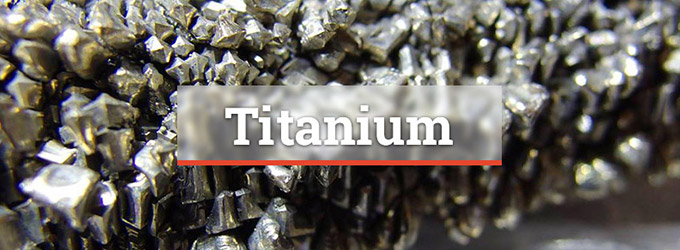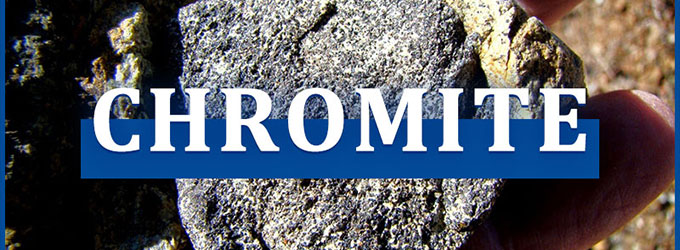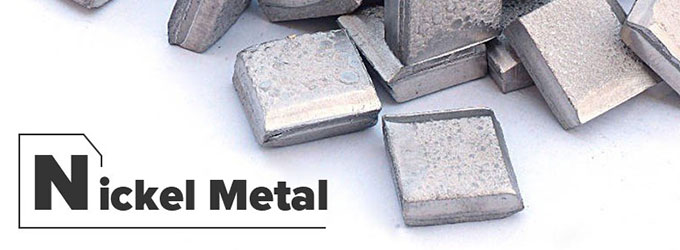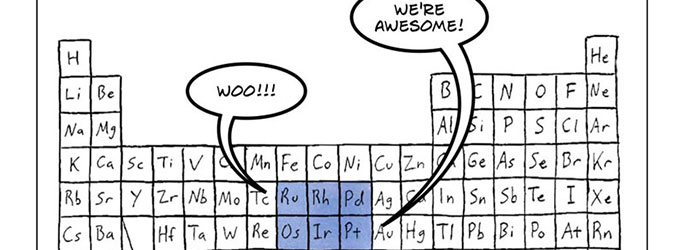Many people speculate that the name "zircon" of the Russian hypersonic missile comes from the use of zirconium-beryllium composite materials in its structure. It is not yet known whether there is any basis for this speculation. But the zircon missile has sparked curiosity about the zirconium metal and its ore, zircon.
Is zirconium a metal?
Yes, zirconium is a metal. It is a chemical element with the symbol Zr and atomic number 40. Zirconium is classified as a transition metal and belongs to Group 4 of the periodic table. It is a lustrous, silvery-gray metal that is relatively soft and malleable when pure.
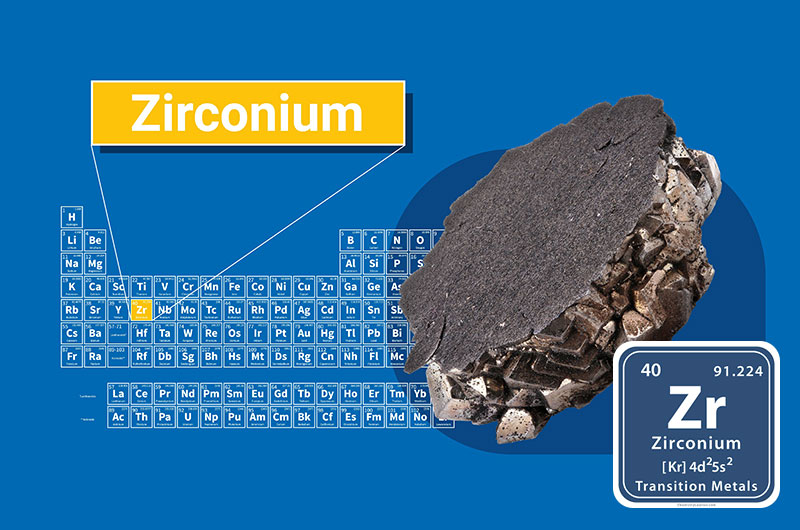
Zirconium properties
- Corrosion resistance: Zirconium has exceptional corrosion resistance, particularly in harsh environments such as strong acids, alkalis, and seawater.
- High melting point: Zirconium has a high melting point of approximately 1,855 ℃ (3,371 °F).
- Low neutron absorption: Zirconium has a low neutron absorption cross-section, meaning it allows neutrons to pass through without significant absorption.
- Biocompatibility: Zirconium exhibits excellent biocompatibility, making it suitable for medical and dental applications.
- Lightweight and high strength: Zirconium is a lightweight metal with excellent strength-to-weight ratio.
- Thermal stability: Zirconium demonstrates excellent thermal stability, meaning it retains its structural integrity and mechanical properties even at high temperatures.
- Non-magnetic: Zirconium is non-magnetic, which is advantageous in certain applications where magnetic interference needs to be minimized, such as in some medical and scientific instruments.
- Compatibility with other metals: Zirconium readily forms alloys with other metals, resulting in improved properties such as increased strength, heat resistance, and corrosion resistance.
Is zirconium a rare metal?
Zirconium is not considered a rare metal. It is relatively abundant in the Earth's crust, with an average abundance of about 165 parts per million (ppm). Zirconium is the 18th most abundant element in the Earth's crust, similar in abundance to elements like copper and zinc.
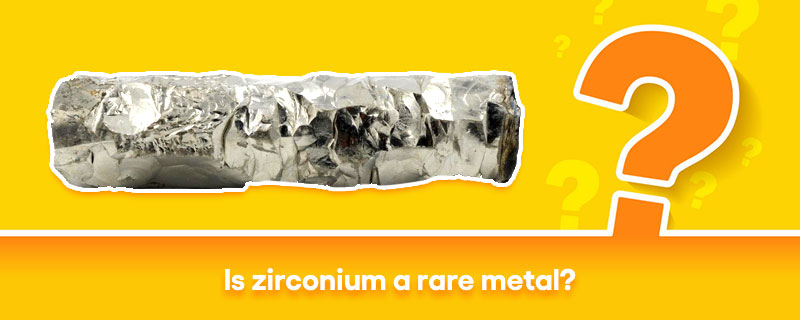
While zirconium itself is not rare, it's important to note that the extraction and processing of zirconium from its primary ore, zircon, require specific techniques and resources.
Additionally, high-quality zirconium products, such as pure zirconium metal or high-purity zirconium compounds, may be less common and command higher value due to the refining and purification processes involved. This also explains why zirconium is so expensive!
What is zirconium used for?
1. Nuclear industry
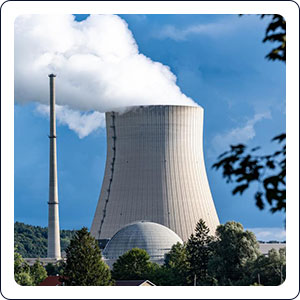
Zirconium is extensively used in the nuclear industry for its excellent corrosion resistance and low neutron absorption properties. It is a key component in fuel rods, cladding materials, and structural components in nuclear reactors.
2. Aerospace industry

Zirconium alloys, such as Zircaloy, are used in the aerospace industry for their lightweight, high-temperature strength, and corrosion resistance. These alloys are used in aircraft components, including jet engine parts and structural components.
3. Chemical processing
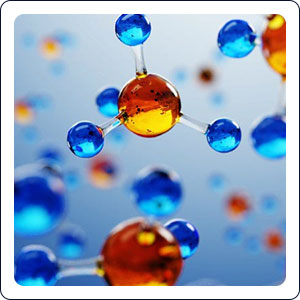
Zirconium's resistance to corrosion makes it suitable for chemical processing applications. It is used in equipment such as heat exchangers, pumps, valves, and vessels that handle corrosive chemicals.
4. Medical and dental applications
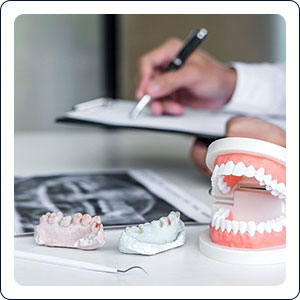
Zirconium's biocompatibility and resistance to corrosion make it suitable for medical and dental applications. It is used in dental implants, orthopedic implants, surgical instruments, and prosthetics. Zirconia crowns are very popular.
5. Catalysts
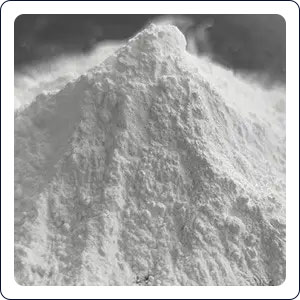
Zirconium compounds and catalysts are utilized in various chemical reactions and industrial processes. Zirconium oxide (zirconia) is used as a catalyst support, particularly in the petroleum and chemical industries.
6. Ceramic and refractory materials
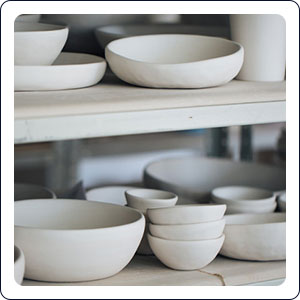
Zirconium compounds are used in the production of ceramics and refractory materials. Zirconium dioxide (zirconia) is a key component in high-temperature ceramics, such as ceramic knives, furnace linings, and crucibles.
Where to find zirconium?
Zirconium exists in two minerals, zircon (zirconium silicate, ZrSiO4) and baddeleyite (zirconia, ZrO2).
Zircon is the main source of zirconium for industrial and commercial use. It is commonly found in heavy mineral placer deposits, beach sand and river sand, and certain igneous and metamorphic rocks. Zircon in heavy mineral placer deposits is also known as zircon sand.
The following countries are rich in zircon reserves:
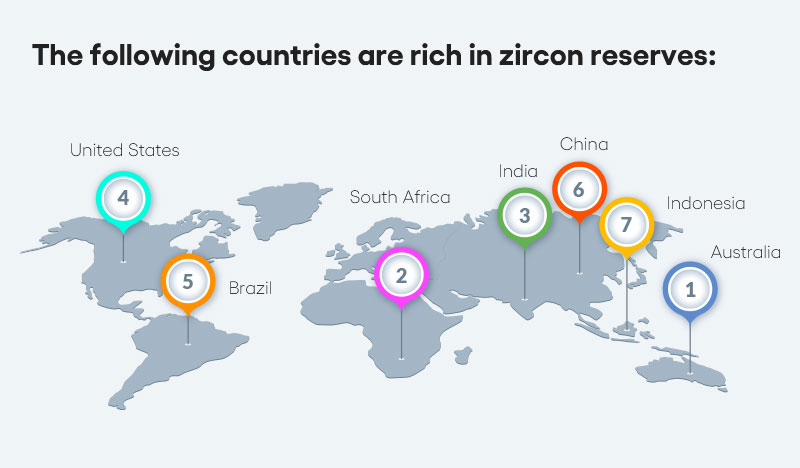
-
1Australia
Australia is one of the largest producers of zircon and has significant deposits in various states such as Western Australia, Queensland, and New South Wales. The Murray Basin in Victoria is a notable zircon mining area. -
2South Africa
South Africa is another major producer of zircon. The country's coastal areas, particularly in the province of KwaZulu-Natal, have significant zircon deposits. -
3India
India has substantial zircon reserves, with deposits found in the coastal regions of Odisha, Andhra Pradesh, and Tamil Nadu. -
4America
Zircon deposits are found in the United States, primarily along the southeastern and southwestern coasts. Notable areas include Florida and Georgia. -
5Brazil
Zirconium-bearing deposits have been found in coastal areas such as the states of Espirito Santo and Bahia in Brazil. -
6China
China is an important producer of zirconium. Zircon deposits have been discovered in coastal areas such as Hainan, Guangdong and Zhejiang provinces. -
7Indonesia
Indonesia has zircon deposits in regions like Bangka-Belitung, Kalimantan, and Sulawesi.
Is zircon gemstone valuable?
Zircon is widely used in various types of jewelry, including rings, earrings, pendants, and bracelets. It can be set in various metals, such as gold or silver, and combined with other gemstones for stunning designs.
Zircon comes in a wide range of colors, including colorless, yellow, orange, red, brown, and blue. Blue zircon is particularly popular and often used as a birthstone for December.
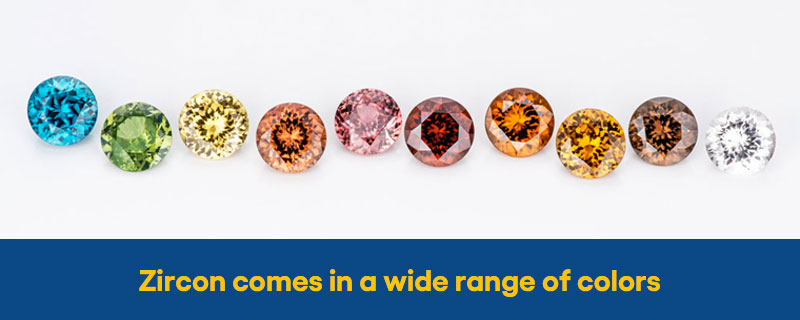
The famous origins of zircon gemstones include Cambodia (famous for blue zircon gemstones), Sri Lanka, Myanmar and so on.
How to distinguish zircon from diamond?
Colorless zircon is used as a diamond substitute. But the price of zircon is much lower than diamond. Therefore, you need to learn to distinguish zircons from diamonds, so as not to buy zircon jewelry at the price of diamonds.
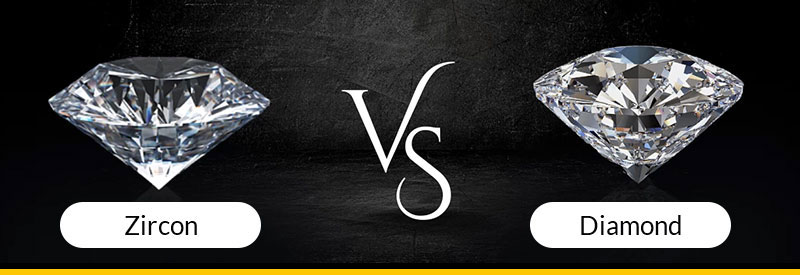
1. Hardness
Diamond is the hardest naturally occurring substance, scoring a perfect 10 on the Mohs scale of mineral hardness. In contrast, zircon has a hardness of around 7.5. You can use the difference in hardness to conduct a scratch test. Diamonds can scratch zircon, but zircon cannot scratch diamonds.
However, it's important to note that this test should be performed with caution and preferably by a professional, as scratching gemstones can damage them.
2. Refractive Index
Gemstones have different refractive indices, which affect how light passes through them. Diamond has a high refractive index, resulting in strong brilliance and sparkle. Zircon also exhibits good brilliance, but its refractive index is lower than that of diamond.
Gemological equipment such as refractometers can be used to measure and compare the refractive indices of gemstones.
3. Dispersion
Dispersion refers to how a gemstone separates white light into spectral colors. Diamonds have high dispersion, which contributes to their exceptional fire and ability to disperse light into vibrant flashes of color. While zircon exhibits weaker dispersion.
4. Luster and Transparency
Both zircon and diamond have a high luster, but their luster may appear slightly different due to variations in their crystal structures. Diamonds often have a glassy or adamantine luster, while zircon can exhibit a vitreous or greasy luster.
In terms of transparency, diamonds are known for their exceptional transparency, while zircon may have slight to moderate levels of transparency, depending on the quality of the stone.
Cubic zirconia (CZ) is a synthetic gemstone that resembles a diamond. It is made from zirconium dioxide (ZrO2) and is widely used as a diamond simulant due to its brilliance and affordability. Click to learn the difference between cubic zirconia and diamonds!
Conclusion
With its excellent corrosion resistance, high melting point, and low neutron absorption characteristics, metal zirconium stands out in the high-tech industry and promotes technological progress.
Zircon is the main source of zirconium metal. In addition, zircon gems bring us the ultimate beauty experience.


